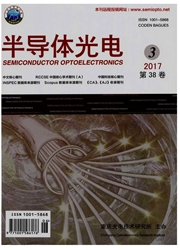

 中文摘要:
中文摘要:
对伽利略卫星系统中E1信号的四种捕获算法:自相关旁瓣消除方法(ASPecT)、filtered相关法、类二进制相移键控法(BPSK-Like)和偏移正交BOC互相关法(OQCC)进行了详细理论分析。采集了真实的伽利略卫星E1信号进行捕获算法的仿真分析,并从基本捕获结果、计算复杂度、相关主峰均值比和检测性能等方面进行了对比分析。仿真结果表明OQCC相关法和其他算法相比,性能更优异,能更有效地提高主峰值与去除副峰。所以OQCC相关法更适合推广,具有更高的实用价值。
 英文摘要:
英文摘要:
The theoretical analysis on the four acquisition algorithms of E1 signal for Galileo satellite navigation systems was performed,including Autocorrelation Side-Peak Cancellation Technique(ASPeCT)algorithm,filtered correlation algorithm,BPSK-Like algorithm and Offset Quadratic Cross Correlation(OQCC)algorithm.The simulation analysis of the acquisition algorithms was performed by collecting the real Galileo satellite E1 signal.Furthermore,the comparison analysis on the performance of the basic acquisition result,computation complexity,the mean value of the correlation peak and the detection performance was also carried out.The simulation analysis shows that OQCC algorithm,compared with other algorithms,realizes more excellent performance and can improve the main peak value and remove the secondary peak more effectively.As a result,the OQCC algorithm is much more suitable for applications and has a higher practical application value.
 同期刊论文项目
同期刊论文项目
 同项目期刊论文
同项目期刊论文
 A novel decoding algorithm based on the hierarchical reliable strategy for SCG-LDPC codes in optical
A novel decoding algorithm based on the hierarchical reliable strategy for SCG-LDPC codes in optical Algebraic criteria for second-order global consensus in multi-agent networks with intrinsic nonlinea
Algebraic criteria for second-order global consensus in multi-agent networks with intrinsic nonlinea 期刊信息
期刊信息
